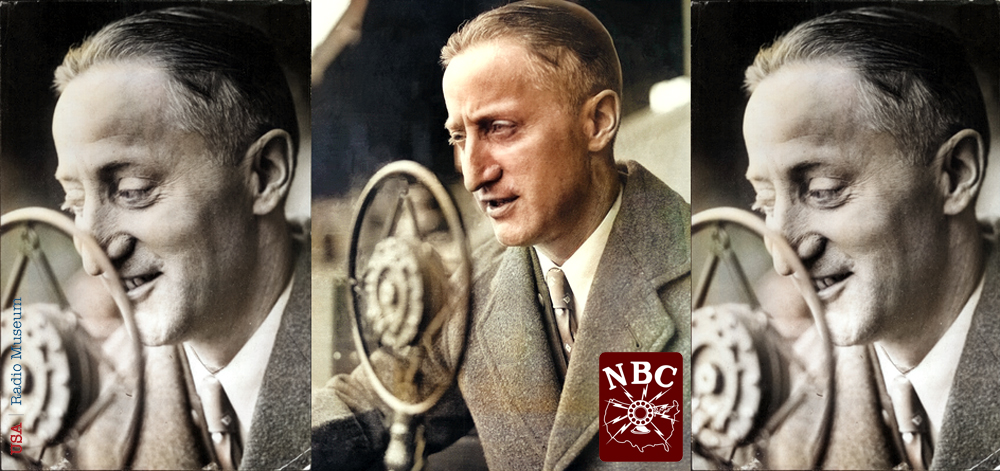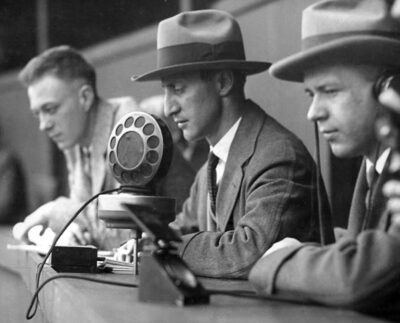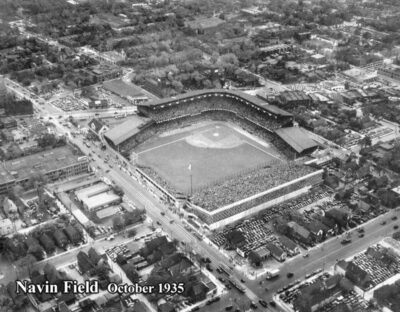Introduction: The Man Who Gave Sports Its First Radio Soundtrack Before television cameras captured every angle and instant replay became gospel, t
Introduction: The Man Who Gave Sports Its First Radio Soundtrack
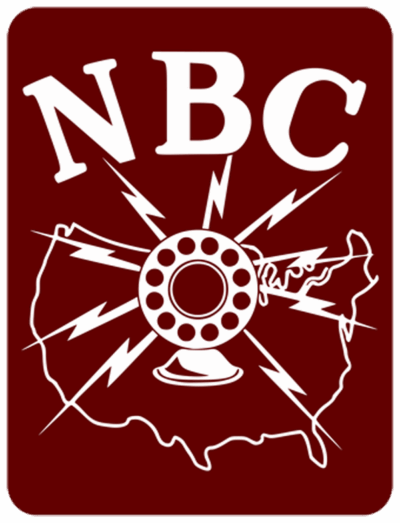 Before television cameras captured every angle and instant replay became gospel, there was the voice. One voice, crackling through vacuum tubes and wooden cabinets, painting vivid pictures of gridiron clashes and baseball heroics for listeners who couldn’t be there in person. That voice belonged to Edwin Lloyd “Ty” Tyson—a man whose name may not be instantly familiar to modern fans, but whose impact echoes in every sports broadcast we hear today.
Before television cameras captured every angle and instant replay became gospel, there was the voice. One voice, crackling through vacuum tubes and wooden cabinets, painting vivid pictures of gridiron clashes and baseball heroics for listeners who couldn’t be there in person. That voice belonged to Edwin Lloyd “Ty” Tyson—a man whose name may not be instantly familiar to modern fans, but whose impact echoes in every sports broadcast we hear today.
Born in 1888 in the small town of Phillipsburg, Pennsylvania, Tyson’s journey to radio greatness was anything but linear. He served in World War I, worked in newspaper circulation, and dabbled in music before fate—and a friend named Fred Waring—nudged him toward the microphone. In 1922, Tyson joined WWJ, the Detroit News-owned station that was already making history as one of America’s first commercial broadcasters. What followed was a career that not only defined sports radio, but helped invent it.
WWJ became the Detroit affiliate of the NBC Red Network in 1926, the very year the network was organized. That marked a major turning point in the station’s evolution—from a pioneering local broadcaster into a national voice within one of the most powerful radio networks of the era.
By joining NBC Red, WWJ gained access to coast-to-coast programming, including dramatic serials, musical showcases, and national news bulletins. It also meant Detroit listeners could hear voices like Rudy Vallée, Amos ’n’ Andy, and Lowell Thomas right alongside their hometown favorites.
Tyson remained with WWJ for over three decades, becoming a beloved fixture in Detroit households and a national symbol of the power of radio to unite, excite, and inspire. His voice was the soundtrack to generations of Tigers fans, Wolverines loyalists, and sports lovers across the Midwest. But more than that, Tyson was a pioneer—a man who saw radio not as a novelty or a medium, but as a new kind of stadium, where imagination and emotion could fill the bleachers. — USA Radio Museum
_____________________
A Pioneer Behind the Mic
Tyson’s first major broadcast came in 1924, when he called the University of Michigan vs. Wisconsin football game live from Ferry Field. This wasn’t a studio recreation or a delayed report—it was a true live broadcast, a radical idea at the time. Fielding H. Yost, Michigan’s legendary coach and athletic director, had initially resisted the concept, fearing it would hurt ticket sales. But Tyson’s voice had the opposite effect. His vivid descriptions and infectious enthusiasm drew fans in, creating a new kind of community—one that gathered around radios instead of stadium seats.
This moment marked a turning point not just for Tyson, but for WWJ and sports broadcasting as a whole. Tyson’s ability to translate the energy of the field into words was unmatched. He didn’t just report the game—he made listeners feel they were there. His cadence, his timing, his emotional range turned every play into a story, every game into a drama.
The Birth of Baseball on the Airwaves
On April 19, 1927, a new chapter in American sports storytelling began. That afternoon, Ty Tyson stepped behind the microphone at Dunn Field in Cleveland to call his first Detroit Tigers game—a spirited 8–5 victory over the Cleveland Indians. It wasn’t just the start of a season. It was the start of something bigger: the first full season of radio broadcasts for a Major League Baseball team.
At the time, many team owners feared radio would cannibalize ticket sales. Why would fans pay to attend when they could listen for free? But WWJ, ever the pioneer, saw radio not as a threat, but as a bridge—connecting the ballpark to the living room, the bleachers to the barber shop. And Tyson was the perfect voice to carry that connection.
His broadcasts were masterclasses in storytelling. Tyson didn’t just describe the action—he translated it. The crack of the bat, the tension in the dugout, the rhythm of the crowd—he painted the diamond with words. His voice carried the scent of fresh-cut grass, the sting of a missed swing, the thrill of a stolen base. Fans who couldn’t afford a ticket or lived hundreds of miles away felt like they were right there in the stands.
Tyson’s signature calls—“It’s going, it’s going, it’s a home run!”—became part of Detroit’s cultural fabric. His cadence was emotional, his timing impeccable. He wasn’t just a broadcaster; he was a companion, a guide, a voice that made summer afternoons unforgettable.
And that first game in Cleveland? It was more than a win. It was a declaration: radio had arrived, and baseball would never sound the same.
WWJ: America’s First Station to Air Live Sports
Long before ESPN, before color TV, before the roar of stadium crowds was piped into living rooms nationwide, there was WWJ—a Detroit station that saw the future in real time.
Founded on August 20, 1920, by the Detroit News, WWJ began life as 8MK, the “Detroit News Radiophone.” It was the first radio station in Michigan and one of the earliest in the United States to broadcast regularly. While most stations in the early 1920s leaned into music recitals, scripted lectures, and phonograph recordings, WWJ broke the mold. It embraced the live moment—the unpredictability, the drama, the heartbeat of a city in motion.
By 1921, WWJ had already aired boxing matches, college football games, and election returns, making it the first station to broadcast a sporting event in Michigan. But it was in 1927, with the launch of full-season Detroit Tigers broadcasts, that WWJ truly revolutionized sports radio. At the center of it all was Ty Tyson, whose voice became synonymous with summer afternoons, seventh-inning stretches, and the thrill of the game.
Tyson wasn’t just a play-by-play man—he was a narrative architect. His broadcasts were immersive, cinematic, and emotionally charged. WWJ gave him the platform, and he gave listeners a portal into the ballpark. The station’s commitment to live sports turned radio from a passive medium into a shared experience, where fans could feel the tension of a full count or the jubilation of a walk-off win, all from their kitchen table or factory floor.
This partnership between WWJ and Tyson was symbiotic and visionary. The station invested heavily in its radio operation, even when it wasn’t immediately profitable. It saw radio not just as entertainment, but as public service, a way to connect Detroiters to their city’s heartbeat. Tyson, in turn, gave WWJ a voice that was warm, trustworthy, and unforgettable.
Together, they didn’t just broadcast games—they changed the way Americans experienced sports. They made radio a living room stadium, a place where memory and emotion met the moment. And in doing so, they laid the foundation for every sports broadcast that followed.
_____________________
Featured Archive: WWJ’s Historic Broadcast – Yankees vs. Tigers, September 20, 1934
Step into the soundscape of a golden afternoon at Navin Field, as Ty Tyson guides listeners through a thrilling matchup between the New York Yankees and the Detroit Tigers. This full-game recording—preserved from WWJ’s original broadcast—is one of the oldest known complete baseball radio broadcasts in existence.
• Date: Thursday, September 20, 1934
• Location: Navin Field (later Briggs Stadium, changed to Tiger Stadium in 1960), Detroit
• Final Score: Yankees 11, Tigers 7
• Notable Players: Lou Gehrig, Tony Lazzeri, Hank Greenberg, Charlie Gehringer, Mickey Cochrane
• Historical Footnote: Babe Ruth was in the ballpark but did not play due to injury
Tyson’s voice carries the rhythm of the game, the pulse of the crowd, and even the clatter of telegraph machines relaying updates across the country. He doubles as the PA announcer, calling pitching changes and pinch hitters with seamless grace. At one point, a telegrapher named Art catches a foul ball mid-broadcast—a moment Tyson narrates with delight.
This recording isn’t just audio—it’s atmosphere. It’s the sound of baseball before television, before instant replay, before commercial breaks.
It’s Ty Tyson at his finest, transforming each pitch into the timeless parlance of radio play-by-play and baseball storytelling. And this historic radio broadcast was on-the-air, 91-years ago.
WWJ-AM | New York Yankees vs Detroit Tigers | September 20, 1934
Audio Digitally Enhanced by USA Radio Museum
_____________________
A Voice Fans Fought For: The 1934 World Series Protest
By 1934, Ty Tyson wasn’t just a broadcaster—he was the heartbeat of Detroit baseball. His voice had become a ritual, a comfort, a constant companion through summers of hope and heartbreak. So when Commissioner Kenesaw Mountain Landis barred Tyson from calling the World Series nationally, citing concerns that his hometown ties would compromise objectivity, it wasn’t just a bureaucratic decision—it was a personal affront to hundreds of thousands of Detroiters.
The Tigers had clawed their way to the Fall Classic, and fans wanted Tyson there to narrate every pitch, every swing, every moment. The commissioner’s ruling ignited a firestorm. Over 600,000 protest letters flooded Landis’s office—an avalanche of outrage, loyalty, and love. It was one of the largest fan-driven campaigns in sports history, a testament to the emotional power of radio and the trust Tyson had earned.
These weren’t just form letters. They came from factory workers, schoolchildren, housewives, veterans—people who had grown up with Tyson’s voice echoing through their homes. His broadcasts had become part of their family traditions, their emotional memory. To them, Tyson wasn’t biased—he was authentic. He didn’t just report the game; he felt it, and so did they.
Faced with overwhelming public pressure, Landis relented. Tyson was permitted to broadcast the Series locally on WWJ, preserving the connection between the Tigers and their city. It was a victory not just for Tyson, but for the power of radio fandom, and for the idea that a broadcaster could be more than a neutral narrator—he could be a trusted voice, a civic treasure.
The 1934 Detroit Tigers, led by player-manager Mickey Cochrane, faced off against the St. Louis Cardinals and their infamous “Gashouse Gang.” It was the Tigers’ first World Series appearance since 1909, and they were stacked with talent: Charlie Gehringer, Hank Greenberg, Goose Goslin, and Schoolboy Rowe all played pivotal roles.
The Series stretched to seven games, with Detroit winning three—including a 10–4 blowout in Game 4 and a clutch 3–1 win in Game 5. But in Game 7, the Cardinals unleashed an 11–0 rout at Navin Field, silencing the hometown crowd and clinching the championship.
Despite the loss, the Tigers’ performance—and Tyson’s local broadcast of the Series on WWJ—cemented their place in baseball lore.
This episode underscored Tyson’s unique bond with his audience. He wasn’t just a voice on the dial; he was part of their lives, their memories, their traditions. His broadcasts were woven into the fabric of Detroit’s identity. And in 1934, that identity stood up and demanded to be heard.
_____________________
Sidebar I: Dunn Field—Cleveland’s Quirky Cathedral of Baseball
From 1921 to 1927, League Park was known as Dunn Field, named after team owner “Sunny” Jim Dunn, who had purchased the Cleveland Indians in 1916. Nestled in the Hough neighborhood, the park was a tight fit—shoehorned between trolley lines and residential blocks. Its 290-foot right field and towering wall created unpredictable ricochets, earning it a reputation for “pinball baseball”.
Dunn Field hosted legends like Tris Speaker, Ty Cobb, and Babe Ruth, and was the site of the 1920 World Series, where Bill Wambsganss made the only unassisted triple play in Series history. Though overshadowed by the newer Cleveland Municipal Stadium in the 1930s, Dunn Field remained a beloved venue for weekday games until 1946. Today, its legacy lives on as the Baseball Heritage Museum, preserving the stories of both major league and Negro League heroes.
Sidebar II: Lil Stoner—Detroit’s Curveball Craftsman
Pitching that April 19, 1927 opener was Lil Stoner, a right-hander with a name as unforgettable as his delivery. Born Ulysses Simpson Grant Stoner, he earned the nickname “Lil” from a younger sibling who couldn’t pronounce his full name. But it wasn’t just his name that stood out—Stoner’s sharp-breaking curveball was legendary, aided by a childhood injury that left his index finger crooked.
In 1927, Stoner was a key part of Detroit’s rotation, known for combining a “smoke-ball” fastball with pinpoint control. That day in Cleveland, he helped secure an 8–5 win, setting the tone for a season where he’d notch 10 victories. Off the field, he was a baker and an iris breeder—proof that baseball’s characters were as colorful as their stats.
Sidebar III: Charlie Gehringer’s 1927 Breakout—The Rise of the Mechanical Man
In 1927, Detroit’s airwaves were alive with Ty Tyson’s voice—and on the field, a quiet second baseman named Charlie Gehringer was beginning to make noise of his own. That season, Gehringer hit .317, launching a remarkable streak of 13 .300-plus seasons in 14 years. Though his most dominant campaign would come in 1929, 1927 marked the moment he stepped out of the shadows and into the spotlight.
Nicknamed The Mechanical Man for his flawless consistency, Gehringer played 133 games in 1927, anchoring the Tigers’ infield with precision and poise. His bat spoke softly but steadily—never flashy, always reliable. Fans tuning in to WWJ heard Tyson’s calls, but they felt Gehringer’s rhythm: a metronome of hits, hustle, and humility.
This sidebar honors the season that set the tone for a Hall of Fame career. In the same year Tyson was redefining radio, Gehringer was redefining second base. Together, they helped shape the sound and spirit of Detroit sports.
Sidebar IV: WWJ and the NBC Red Network — A Balancing Act of National Prestige and Local Voice
By 1934, WWJ wasn’t just Detroit’s pioneering radio station—it was a proud affiliate of the NBC Red Network, one of the most influential national networks in American broadcasting. This affiliation, established in 1926, gave WWJ access to a rich tapestry of national programming: dramatic serials, orchestral concerts, presidential addresses, and coast-to-coast news bulletins. It was a gateway to prestige and reach.
But WWJ never surrendered its soul.
Even as national content flowed through its airwaves, WWJ remained fiercely committed to local storytelling. Anchored by voices like Ty Tyson, the station carved out space for Detroit’s own heroes, sports legends, and community narratives. Tyson’s play-by-play broadcasts of Tigers games weren’t just sports coverage—they were cultural rituals, woven into the daily lives of listeners across Michigan.
WWJ’s editorial team walked a tightrope: blending the grandeur of network programming with the intimacy of local connection. In doing so, they helped define what American radio could be—not just a megaphone for national voices, but a mosaic of hometown pride and shared experience.
_____________________
A Legacy That Transcends Time
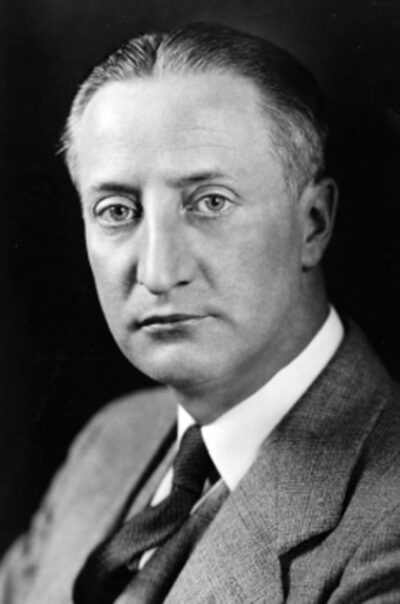 When Ty Tyson retired from WWJ in 1952, he left behind more than a microphone—he left behind a blueprint. Over three decades, Tyson had helped invent a genre, shape a profession, and elevate radio from novelty to necessity. His broadcasts weren’t just informative—they were immersive, emotional, and deeply human. He didn’t just narrate games; he translated them into shared experience.
When Ty Tyson retired from WWJ in 1952, he left behind more than a microphone—he left behind a blueprint. Over three decades, Tyson had helped invent a genre, shape a profession, and elevate radio from novelty to necessity. His broadcasts weren’t just informative—they were immersive, emotional, and deeply human. He didn’t just narrate games; he translated them into shared experience.
Tyson’s style—vivid, heartfelt, and grounded in empathy—became the gold standard for sports broadcasting. He taught listeners to feel the game, not just follow it. His influence rippled outward, inspiring a generation of broadcasters who saw radio not as a script, but as a canvas. From Ernie Harwell to Vin Scully, echoes of Tyson’s cadence and clarity can be heard in the voices that followed.
In 1964, Tyson received one of baseball’s highest honors: the Ford C. Frick Award from the National Baseball Hall of Fame, recognizing his monumental contributions to the game and the medium. Though the award was formally established in 1978, Tyson was retroactively honored for his pioneering role—a testament to how foundational his work had been. He wasn’t just a broadcaster; he was a founder, a framer, a first.
Tyson passed away in 1968, at the age of 80, in Grosse Pointe Farms, Michigan. But his voice still echoes—in archives, in memory, and in the DNA of every sports broadcast that seeks to connect rather than just inform. His legacy lives in the rhythm of play-by-play, in the art of painting a game with words, and in the emotional bond between broadcaster and fan.
Today, as we stream games on smartphones, toggle between camera angles, and watch instant replays in high definition, it’s easy to forget the magic of that first era of sports radio. But Tyson’s story reminds us: before the visuals, there was the voice. And thru the magic of radio, that voice made every play-by-play heard by the listening audience seem to just come alive.
Radio Hall of Fame:
Surprisingly, Ty Tyson is not listed among the inductees of the Radio Hall of Fame. It’s a curious omission, considering he was one of the first to bring live sports into American homes and helped define the role of the play-by-play announcer. His absence from that roster is a reminder of how some foundational voices in radio history remain under-acknowledged.
Baseball Hall of Fame:
Tyson was a 2016 nominee for the prestigious Ford C. Frick Award, which honors excellence in baseball broadcasting. While he wasn’t ultimately selected, the nomination itself placed him among elite company and affirmed his legacy as the original voice of the Detroit Tigers. His broadcasts—starting in 1927—were so beloved that 600,000 fans petitioned to have him call the 1934 World Series locally when national networks tried to exclude him.
Legacy Recognition:
Beyond formal awards, Tyson’s impact was felt in the hearts of listeners. He was Detroit’s first electronic media star, a trusted voice for generations, and a model of integrity in sports commentary. His style—straightforward, fair, and emotionally grounded—set a standard that others followed. He continued broadcasting until 1953, and even returned for guest stints with Ernie Harwell, delighting longtime fans.
The Porch Broadcast
Summer, 1932 – Detroit, Michigan
The sun was dipping low behind the rooftops, casting long shadows across the porch where a ten-year-old boy sat cross-legged beside his grandfather. The old Zenith radio hummed to life, its wooden casing warm from the day’s heat. Then came the voice—clear, urgent, familiar.
“It’s going… it’s going… it’s a home run!”
The boy leapt to his feet, arms raised, mirroring the imagined crowd at Navin Field. His grandfather chuckled, wiping a tear from his eye. “Ty’s got a way of making you feel like you’re right there,” he said. “Even when you’re just two old fools on a porch.”
For families like theirs, Tyson wasn’t just a broadcaster. He was the bridge between generations, the sound of summer, the heartbeat of Detroit.
The Ferry Field Gamble
October 25, 1924 – Ann Arbor, Michigan
Fielding H. Yost stood with arms crossed, watching the WWJ crew assemble their makeshift broadcast booth atop the bleachers. He wasn’t convinced. “Radio’ll ruin ticket sales,” he muttered. “Why would folks pay when they can listen for free?”
Ty Tyson climbed the steps with a notebook in hand and nerves in his stomach. He’d never called a game live from the field before. The wind whipped through the open-air booth as he adjusted the microphone and glanced at the crowd below.
Kickoff. Tyson leaned in.
“Good afternoon, ladies and gentlemen. We’re coming to you live from Ferry Field . . . ”
By halftime, WWJ’s switchboard was flooded. Listeners were captivated. Yost, arms still crossed, cracked a smile. “Maybe there’s something to this radio business after all.”
The Protest That Roared
Fall, 1934 – Detroit News Building
Stacks of envelopes spilled across the newsroom floor—hundreds, then thousands, then hundreds of thousands. Detroiters were furious. Commissioner Kenesaw Mountain Landis had barred Ty Tyson from calling the World Series nationally, citing “local bias.” But to fans, Tyson wasn’t biased—he was beloved.
One letter read:
WWJ executives stood stunned as the final count came in: over 600,000 protest letters. The commissioner relented. Tyson would call the games locally.
When he took the mic that October evening, his voice trembled—not from nerves, but from gratitude. Detroit had spoken. And radio had proven its power—not just to inform, but to unite.
Ty Tyson’s Life and Final Years
• Date of Birth: May 11, 1888
• Date of Death: December 12, 1968
• Age at Death: 80 years old
• Cause of Death: Arterial ailment, at Cottage Hospital in Grosse Pointe Farms.
Though Tyson retired from full-time broadcasting in 1953, his voice was never truly gone from Detroit’s airwaves. He remained a revered figure, and in 1965—just three years before his passing—he was invited back for one final, deeply emotional appearance.
Closing Reflection: A Legacy Preserved
Ty Tyson didn’t just narrate games—he narrated lives. His voice carried the thrill of victory, the ache of defeat, and the heartbeat of a city that loved its teams and its radio. Through WWJ’s pioneering broadcasts, Tyson helped shape not only how we listened, but how we felt. He gave sound to silence, story to statistics, and soul to sport.
Today, as the USA Radio Museum honors his legacy, we do more than remember—we preserve. We safeguard the echoes of a golden age, where radio wasn’t just a medium but a movement. Tyson’s voice, and the voices of all who shaped that era, remain fixed in memory, echoing through the arc of time’s passage. They are not relics—they are resonances.
Because in every crackle of vintage audio, in every archival reel, in every tribute we write, the past speaks. It speaks in the cadence of a home run call, in the hush before a kickoff, in the warmth of a broadcaster who knew his audience by heart. And we are here to listen—not just with ears, but with reverence.
We listen so that future generations may hear. We preserve so that legacy becomes living history. And we celebrate so that voices like Ty Tyson’s never fade, but continue to guide us—from the booth to the bleachers, and even still, to the here and now.
_____________________
A USARM Viewing Tip: On your PC? Mouse/click over each image for expanded views. On your mobile or tablet device? Finger-tap all the above images inside the post and stretch image across your device’s screen for LARGEST digitized view. Then click your brower’s back arrow to return to the featured post.

